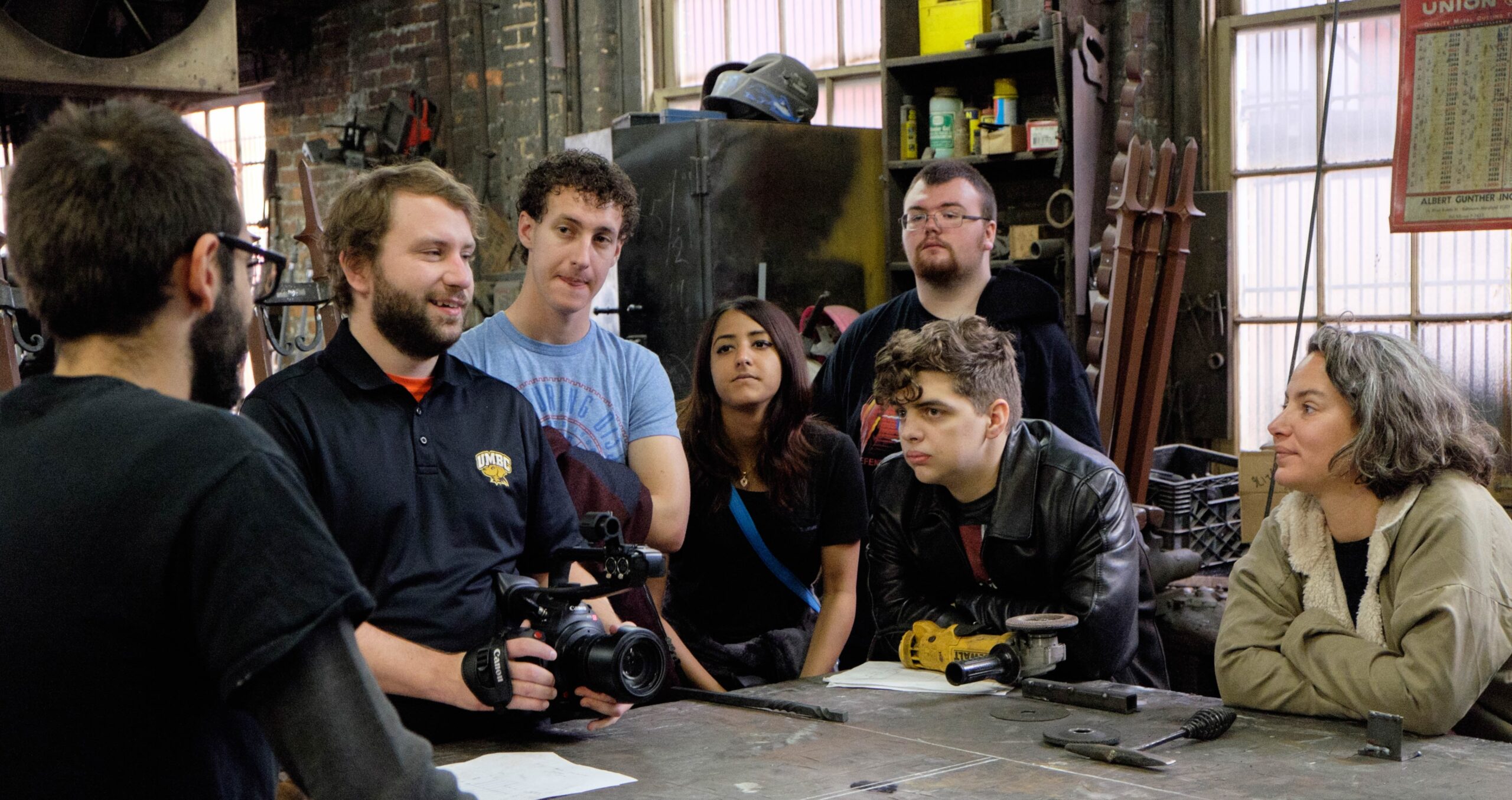For 125 years, Baltimore’s Sparrows Point Steel Mill employed tens of thousands of steel workers and was a center of community life in the region. At one point the mill was the world’s largest steel producer, but after peaking in the 1960s it began a gradual decline, permanently closing its doors in 2012. Since then, UMBC students and faculty have worked to safeguard the heritage of the mill community and to amplify the voices and stories of Sparrows Point. This work has served as the springboard for a larger, ongoing project to preserve Baltimore history in neighborhoods across the city.
The project started in late 2012 after the mill and its surrounding neighborhoods were honored with a Maryland Traditions award as a vital place of enduring importance in the industrial heritage and story of Maryland. As part of the ongoing project, Michelle Stefano, visiting assistant professor of American studies, Bill Shewbridge, professor of the practice of media and communication studies, and their students have recorded interviews with Sparrows Point workers and community members.
“Through this process, we’re not giving them voice, we’re giving them an opportunity to amplify their voices and to have them heard by a wide audience,” explains Shewbridge. “We don’t talk about empathy being a learning outcome, but it really helps the students see beyond their own selves. They’re having very intimate conversations with people about their lives.”
What started out as a collection of interviews has transformed into a documentary in response to feedback from the community, to contextualize the individual steelworker stories and to build a broader narrative about what life was like at Sparrows Point.
“We realized that we were sitting on this big body of data, and we found there were common stories being told: the women’s rights movement and Civil Rights Movement, unionization,” says Stefano. “All these larger stories were playing out at Sparrows Point. We realized that we were speaking to broader issues of deindustrialization in the United States and the human side of industrial decline.”
The final cut of the documentary Mill Stories: Remembering Sparrows Point premiered at the Creative Alliance in Baltimore in April 2014. In the months that followed, Stefano and Shewbridge screened the film at several international and domestic film festivals, with future screenings planned in Italy (January 2016) and Bethlehem, Pennsylvania (April 2016).
Baltimore Traces
The Mill Stories documentary is one piece of a much larger, ongoing collaborative project with students and faculty across the humanities at UMBC and the Center for Emerging Media, a Baltimore non-profit founded by radio host Marc Steiner. Baltimore Traces builds on Mill Stories and the Mapping Baybrook project, led by faculty Nicole King, American studies, and Steve Bradley, visual arts. It produces audio and video oral histories focused on Baltimore residents and neighborhoods, and it has continued to expand thanks to a Hrabowski Innovation Fund award and Maryland Humanities Council grant.
As part of the ongoing work, Shewbridge and Stefano are now jointly teaching the humanities seminar “Documenting Culture in Baltimore.” Through the course, first-year Humanities Scholars have learned how to create short digital ethnographies exploring micro-cultures in Baltimore City, focusing on community icons like the Trinacria Italian Deli, Krug Iron Works, and Faidley Seafood.
“It goes beyond anything you can learn by just reading about it,” explains Humanities Scholar Lane Kennedy ’19, American studies and gender and women’s studies. “Getting that face-to-face interaction is a very unique way to learn about the histories of these places, and it gives it that personality that you can only get by talking with people in person.”
Humanities Scholar Alex Armbruster ’19 shares, “It allows me to see patterns of development, how industry changed, and how cultural communities have interacted with each other across time.”
This appreciation for people’s experiences and the cultural history of places is what drives projects like Mill Stories.
“This is at its core a project about culture. It’s a vehicle to talk to these broader social, economic, and political issues. We always separate culture from these other contexts and forces, and yet it is such an integral part,” says Stefano. “Look at the power of focusing on culture and its human impact.”
Image: UMBC students and faculty at Krug Iron Works in Baltimore. Photo by Bill Shewbridge.
Tags: AmericanStudies, Baltimore City, CAHSS, MCS, VisualArts

